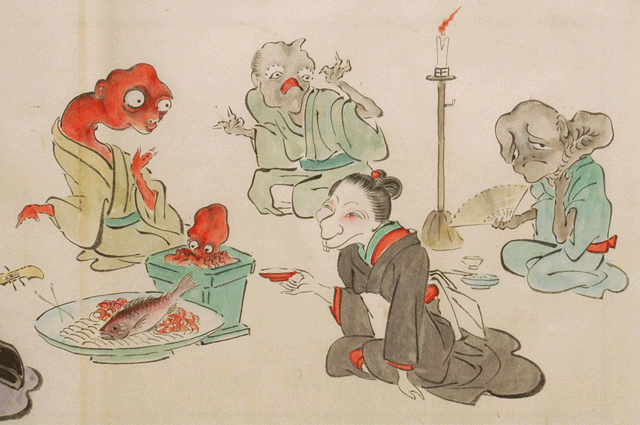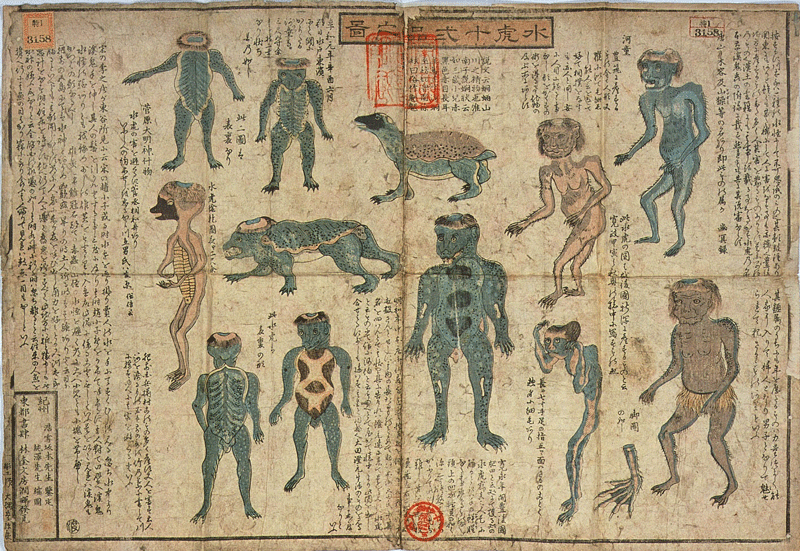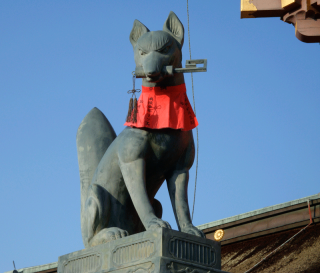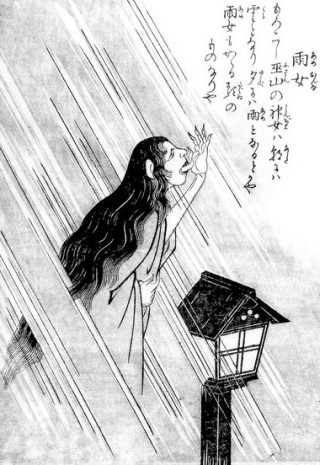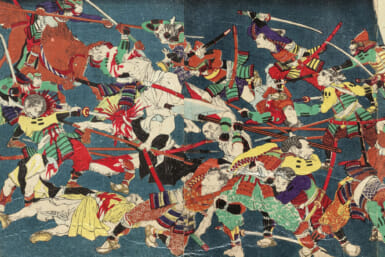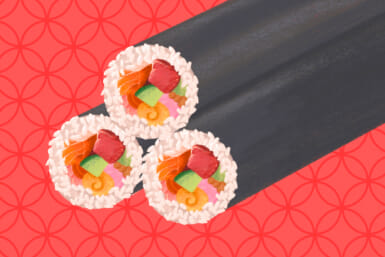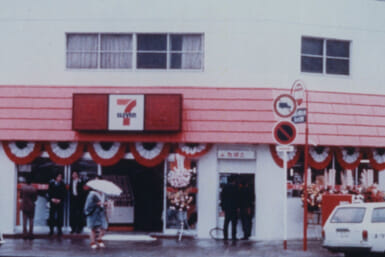Even in 2015, you don’t need to go far to find traces of Japan’s folkloric monsters of yore.
By John Paul Catton
Anyone who spends time in Japan will notice that ghost stories and supernatural beasts hold a special place in the nation’s consciousness. Whereas vampires, werewolves and mummies are favorites for Western Halloween costumes, the Japanese have a large menagerie of creatures unlike anything you’ll find elsewhere. The Yokai go back a long way; either imported from ancient Chinese mythology or mentioned in folk tales over a thousand years old. Their exploits were collected in Edo period publications such as “Hyakki Yagyo” by Toriyama Sekien, depicted in ukiyo-e by artists such as Katsushika Hokusai, and immortalized in countless manga, anime and live-action films.
Walk past the doorway of the chain izakaya called Tengu and you’ll see a bright red male face with a long, phallic nose. This is the Hanataka-Tengu—a race of winged humanoids with magical powers and also formidable warriors in battle. Legend recounts that Minamoto no Yoshitsune, the real-life military officer from the early Kamakura period, was trained in the arts of war by Sojobo, the Tengu King. They also have the habit of mesmerizing and kidnapping humans, and the Edo period accounts are suspiciously similar to modern day alien abductions. Mount Takao, on the outskirts of Tokyo, is one of the alleged Tengu nesting sites and sightings of strange phenomona persist there to this day.
Kappabashi is an area of downtown Tokyo near Asakusa renowned for its kitchenware stores and its plastic models of food that make handy souvenirs. It also shares the same name as Kappa, green reptilian creatures that lives in ponds, rivers and lakes, and there are over a dozen statues of them lining the area’s streets. Kappa are mostly regarded as friendly beings with their big eyes, goofy beaks and distinctive crests of hair, but in the Edo period they were regarded as dangerous carnivores capable of dragging children into the water and ripping their bodies open to feed on their livers, or their shirikodama – a ball of spiritual power housed within the human body. One theory suggests that this monster was inspired by the Japanese giant salamander, a large amphibian that could be found roaming freely in pre-industrial Japan. The nearby Sogen-ji temple (aka Kappa-Dera) is dedicated to the creatures, and contains a mysterious relic claimed to be a Kappa’s mummified hand.
Kitsune is the Japanese word for fox, but it is also the name of a wily trickster Yokai notorious for shapeshifting, divining, mesmerizing humans, and conjuring mystic fires (Kitsunebi). There are numerous folk tales and kabuki plays on the theme of Kitsune assuming the forms of beautiful women to enchant unwitting men. Needless to say, these stories don’t end well, but Kitsune sometimes form strong emotional attachments with their spouses and any resulting children will be blessed with magical powers.
Kitsune are also associated with Inari, the Shinto god of rice. Their statues can be seen at Inari-jinja throughout Japan, stone foxes with eyes and teeth painted red and white. With their reputation for romantic tomfoolery, perhaps it’s no accident that there’s a spooky Inari-jinja right in the heart of Shibuya’s love hotel district on the Dougenzaka-dori!
The word Kirin is usually associated with beer, and the giant corporation that brews it; but this, too, is the name of a mythological beast. The Kirin looks like a deer with dragon-like scales and an ox’s tail, and is usually surrounded by mystic fire. This creature is similar to the western unicorn, and is said to bring peace and good luck, which is probably why the founders chose the name way back in 1907.
Edo period Japan was a rigidly patriarchal society, and behind the feudal status of women as the husband’s property lay the subconscious male fear that women resented their status in society. This was carried over into the realm of the supernatural, with countless stories detailing female spirits returning from the dead and exacting a horrific revenge on the men who had wronged them.
The J-Horror cliche of the female ghost with long, matted hair covering her face may have originated in the Kejoro, a creature said to have haunted red light districts such as Yoshiwara, near Asakusa. If this kimono-clad woman approached you, you might foolishly try to brush away her hair to see her face, only to find her head is made entirely of hair – long dark tresses that come to life and strangle you.
Red-light districts were also haunted by the Kerakera-Onna who could drive men insane with her incessant, derisive cackling, the Taka-Onna who could elongate her legs and body to peer through upper-story windows and terrorize the couples inside, the skeletal Hone-Onna immortalized in the folk tale Peony Lantern (Botan Doro) – and perhaps most disturbing of all, the Kage-Onna, the mournful, shadowy outline glimpsed from the corner of the eye in darkened tatami rooms.
Farmers, monks and wanderers in the countryside were also in danger from manifestations of the supernatural. The Yuki-Onna was a beautiful, snow-white Yokai who could freeze a man to death at her touch. She roamed the Japan Alps, and many a fictional traveler succumbed to her icy kisses. Her sister spirit is the Ame-Onna, a Yokai that looks like a despondent woman in a drenched kimono with soaking wet hair plastered to her face, constantly licking rainwater from her hands, who haunts villages at night looking for children to snatch from their mothers. Both the Yuki-Onna and Ame-Onna are believed to have originated as minor weather deities in the Shinto faith … before folklore took them down a darker path.
Japanese folklore and urban legends abound with even weirder creatures that defy explanation. The Tanuki parade, one of the “Seven Wonders of Honjo” (modern-day Sumida-ku) … the Nopperaboh, the faceless creature immortalized in Lafcadio Hearn’s tale “Miujina” set on a hill in Akasaka … the Mitsumeyazura, a floating clump of eight heads with three eyes … the Fuhri, a creature that moves so fast it’s impossible to see its true form … and the Buruburu, the physical embodiment of fear itself.
However terrifying their origins might have been, Yokai have adapted and evolved with their native culture. The recent smash hit “Yokai Watch” game and TV series showed that Yokai today inspire feelings of humor and fondness, as well as fear.
Main Image: Detail of the 16th-17th scroll, “Yokai Marriage,” via Wikimedia
For more information on the yokai, see also:
www.yokai.com: an online database of Japanese ghosts and monsters.
“Yokai Attack: The Japanese Monster Survival Guide” by Matt Alt and Hiroko Yoda
“The Unofficial Guide to Japanese Mythology” by John Paul Catton
“Dark Lanterns”: a collection of Yokai-themed ghost stories by Zoe Drake

